Glenfinnan and Glencoe & Hogwarts Too
This is my seventeenth post on last summer’s wonderful Medieval Britain: Castles Cannons & Crowns tour with Canadian military travel specialists Liberation Tours. Coincidentally, it’s also the 400th post on this website. In the last post the group spent time exploring the Loch Ness area and although we didn’t find Nessie, we did see some great castles and some typical Scottish highland scenery that has been attracting visitors since the time of Samuel Johnson. Today we will see even more great scenery as we visit two of Scotland’s most iconic and controversial historical sites. First we will go to Glenfinnan and stand on the spot where Bonnie Prince Charlie first set foot on the Scottish mainland and raised his banner to lead his followers in the failed rebellion simply known as ‘The 45’. Then we will visit the scene of the most controversial massacre in Scottish history, Glencoe and learn more about it as we walk from the village to Glencoe Monument. Hope you’ll join us.
The morning starts off once again with a drive along the shores of Loch Ness on the A82, the third time we’ve taken this route and who’s complaining; I could drive this stretch of road a hundred times and not get tired of it. Besides there’s always a chance to spot you know what. At Fort William we catch a glimpse of Ben Nevis the highest peak in Great Britain before turning west and following the course of Loch Eil to Glenfinnan which is not so much a place, but a stop on the road where visitors come to see the two principal attractions, usually for completely different reasons.
Glenfinnan Monument
The Glenfinnan Monument was erected in 1815 near the spot where Charles Edward Stuart, aka Bonnie Prince Charlie (or as I prefer to think of him, The Young Pretender with the emphasis on pretender) first set foot on the Scottish mainland. He was rowed up the length of Loch Sheil to where it ends at Glenfinnan. It must have been a nice ride because Loch Sheil is a truly magnificent site.
Charlie was expecting that he would be greeted by thousands of cheering Highlanders, but instead had to settle for a number of MacDonalds who were the Lords of the Isles and few others. However, he did have patience and waited at Glenfinnan as more and more of the nearby clansmen heard of his arrival and did rally around the banner when it was raised here on August 19, 1745 and ‘The 45’ was truly underway. Eight months later over almost 2,000 of them lay dead or dying on Culloden Moor which we visited in an earlier post. Charlie wasn’t one of them. He went on the lam and eventually boarded a French frigate very near the same spot on which he started the rebellion, never to see Scotland again.
We stopped first at the small interpretive centre where they have this model depicting the raising of the standard, an over romanticized event in Scottish history if there ever was one.
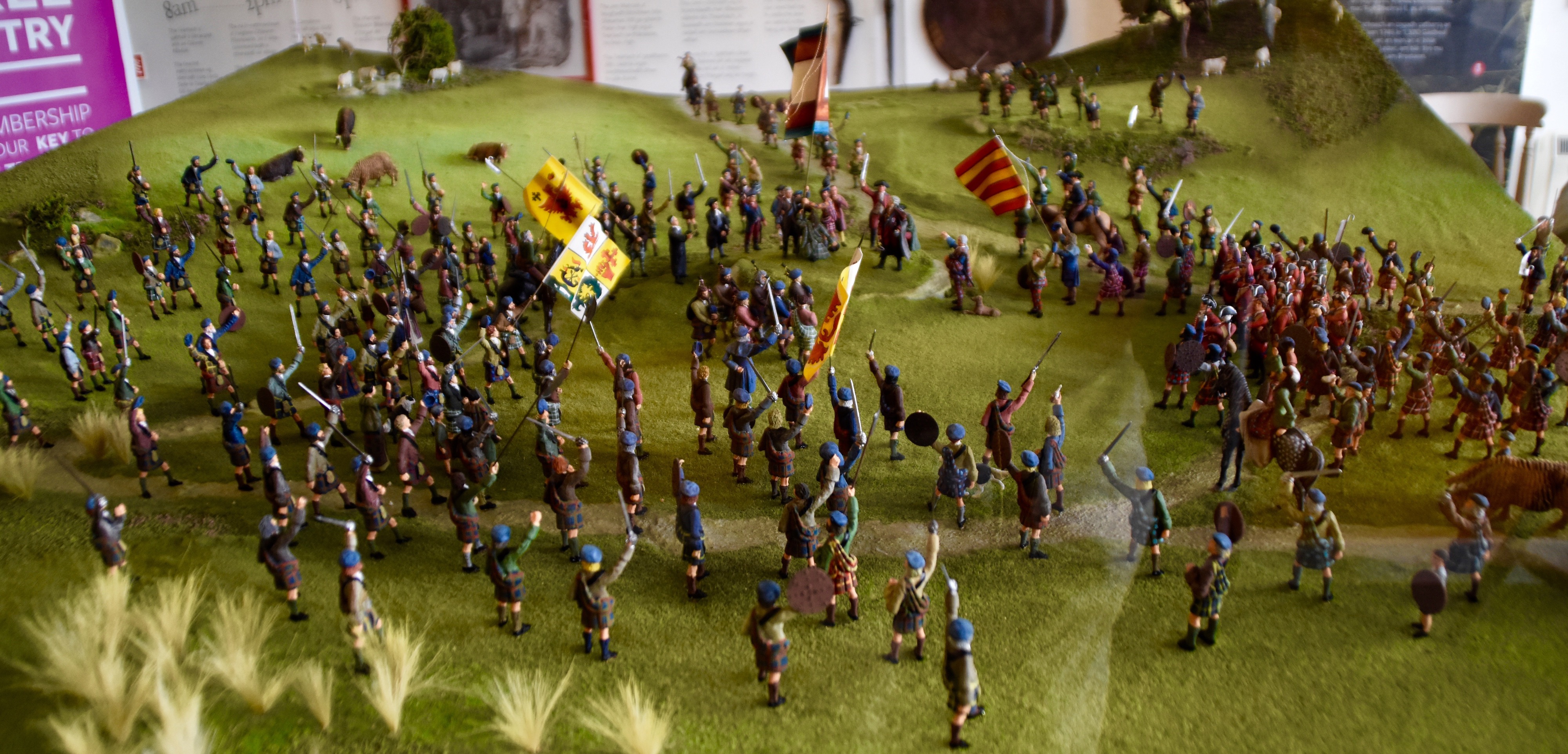
Our tour guide Phil Craig, who goes to great lengths to prepare informative and entertaining historical briefings on each of the major places we visit on the tour, had provided us with the background as we head toward the impressive Glenfinnan Monument.
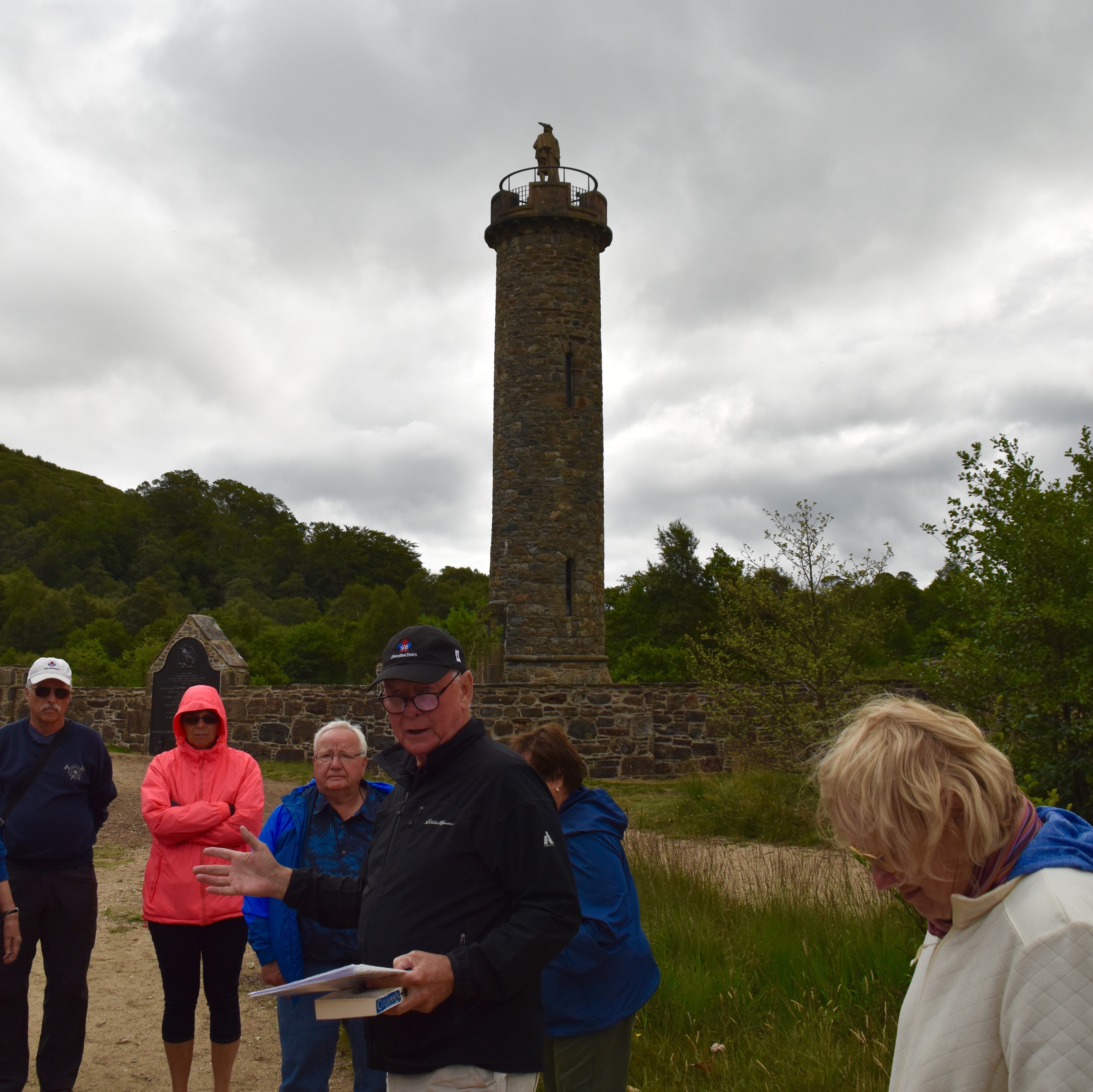
The monument was built in 1815, seventy years after the event commemorated here took place and was commissioned by a branch of the MacDonald clan.
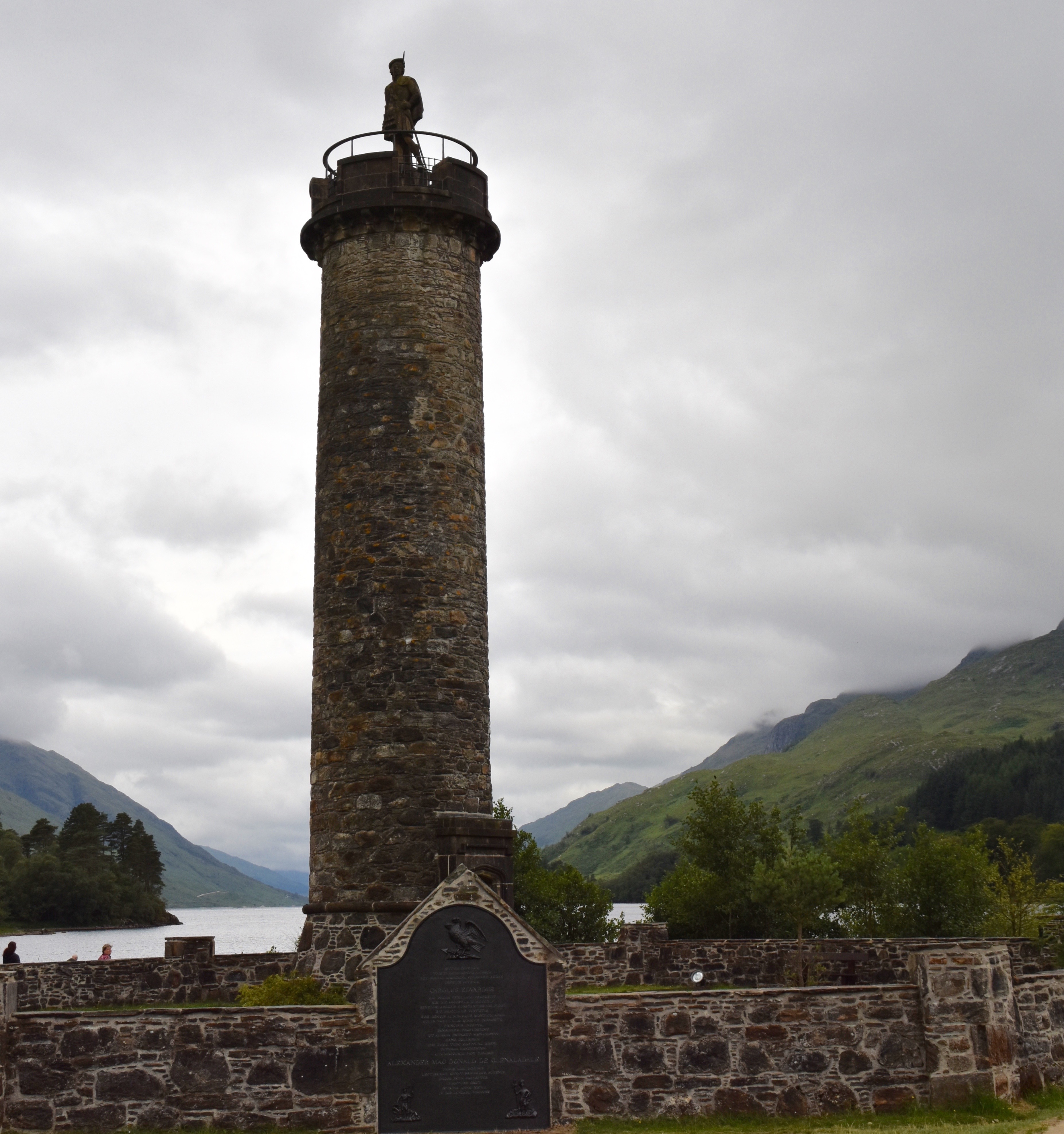
Contrary to what most people think, the figure on top is not Charlie, but rather The Unknown Highlander and it was only added after the fact.
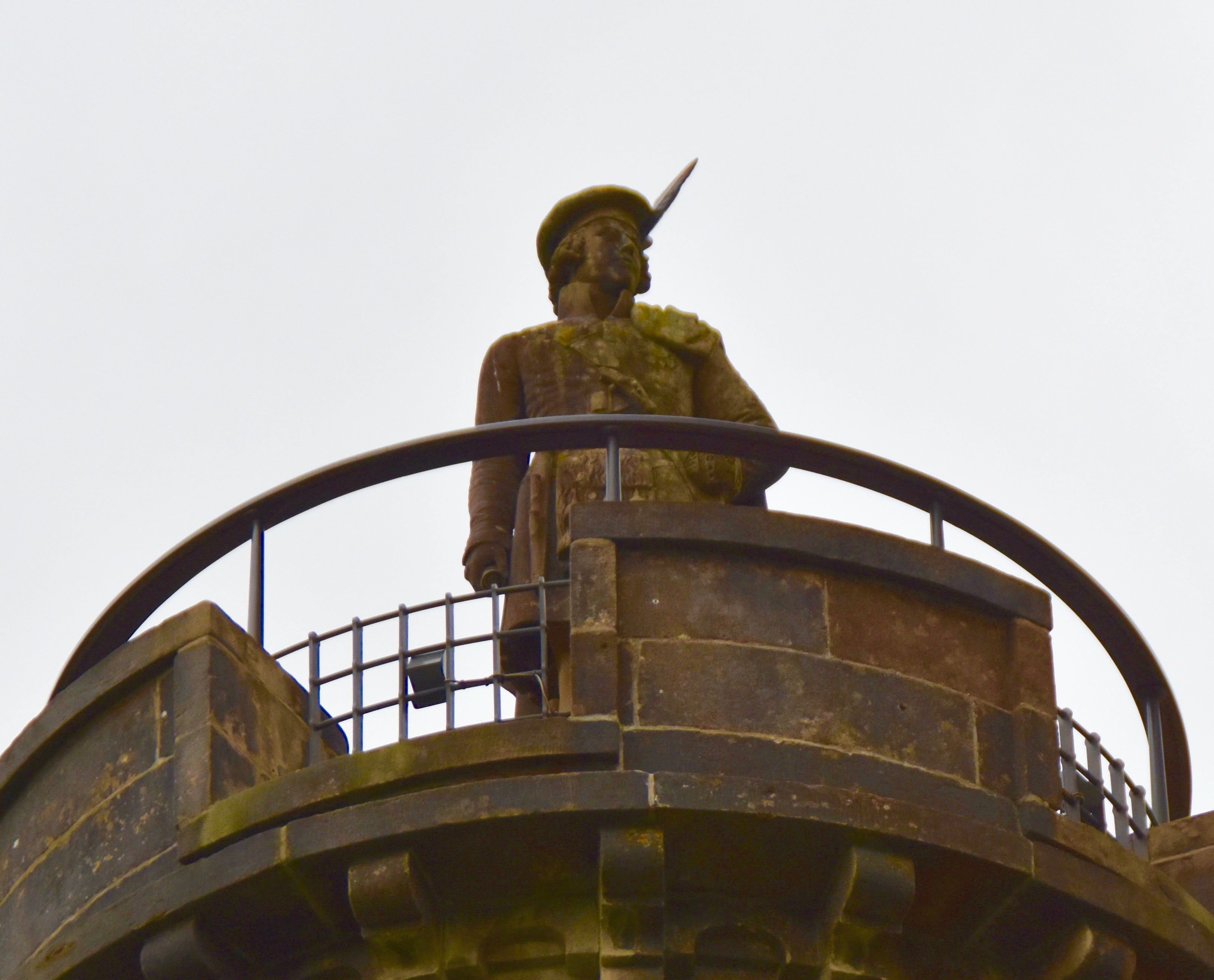
Glenfinnan Viaduct
I mentioned that people visit Glenfinnan for two different reasons. The first is the monument and the second is the Glenfinnan Viaduct which is a train bridge on the West Highland Railway. You can’t actually see it from the parking lot so you have to climb up a fair ways up to a ridge to get a good look. However, it’s more than worth it because first you get a magnificent view of the Glenfinnan Monument and Loch Sheil.
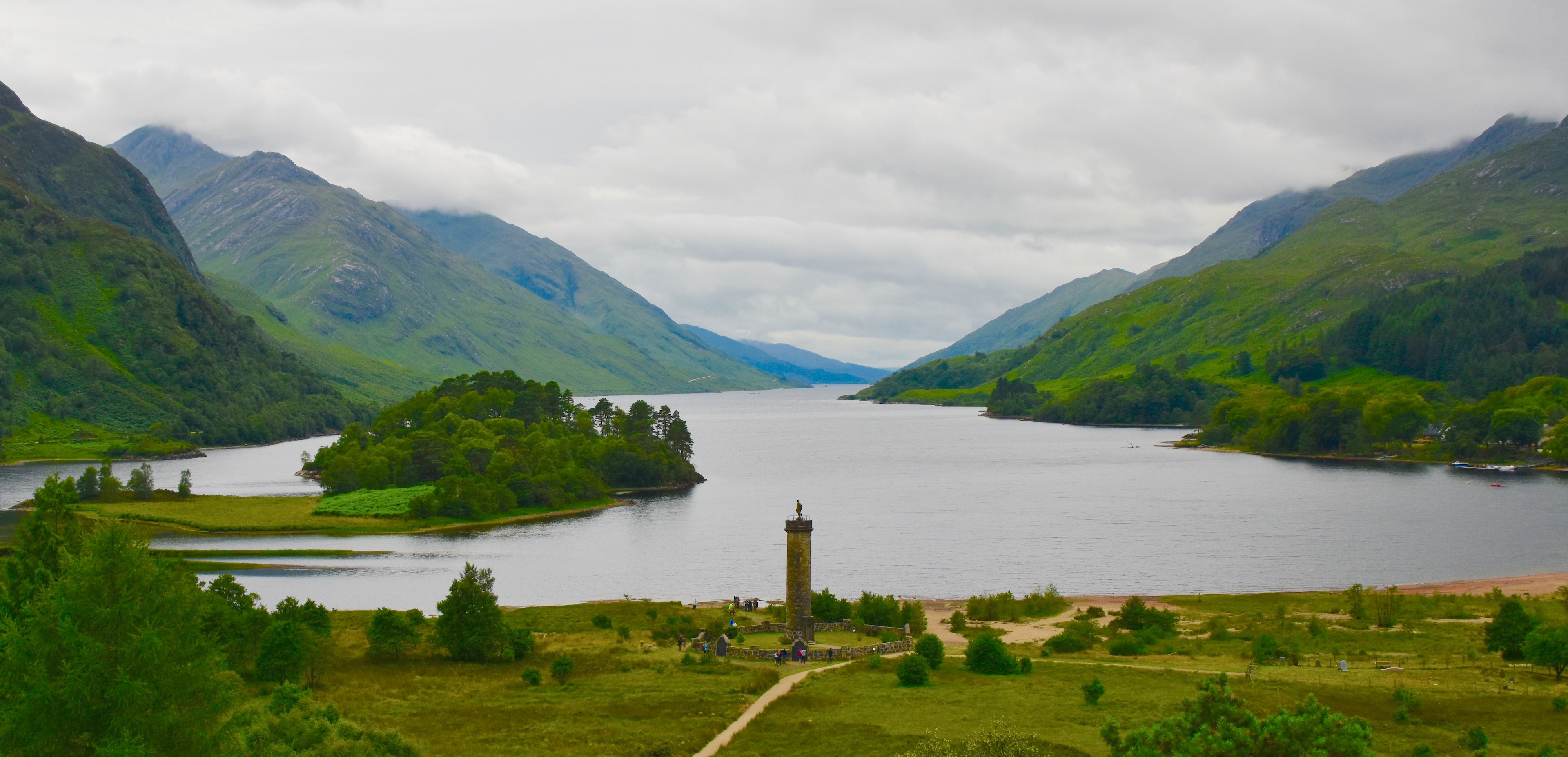
And then looking in the opposite direction you see the Glenfinnan Viaduct.
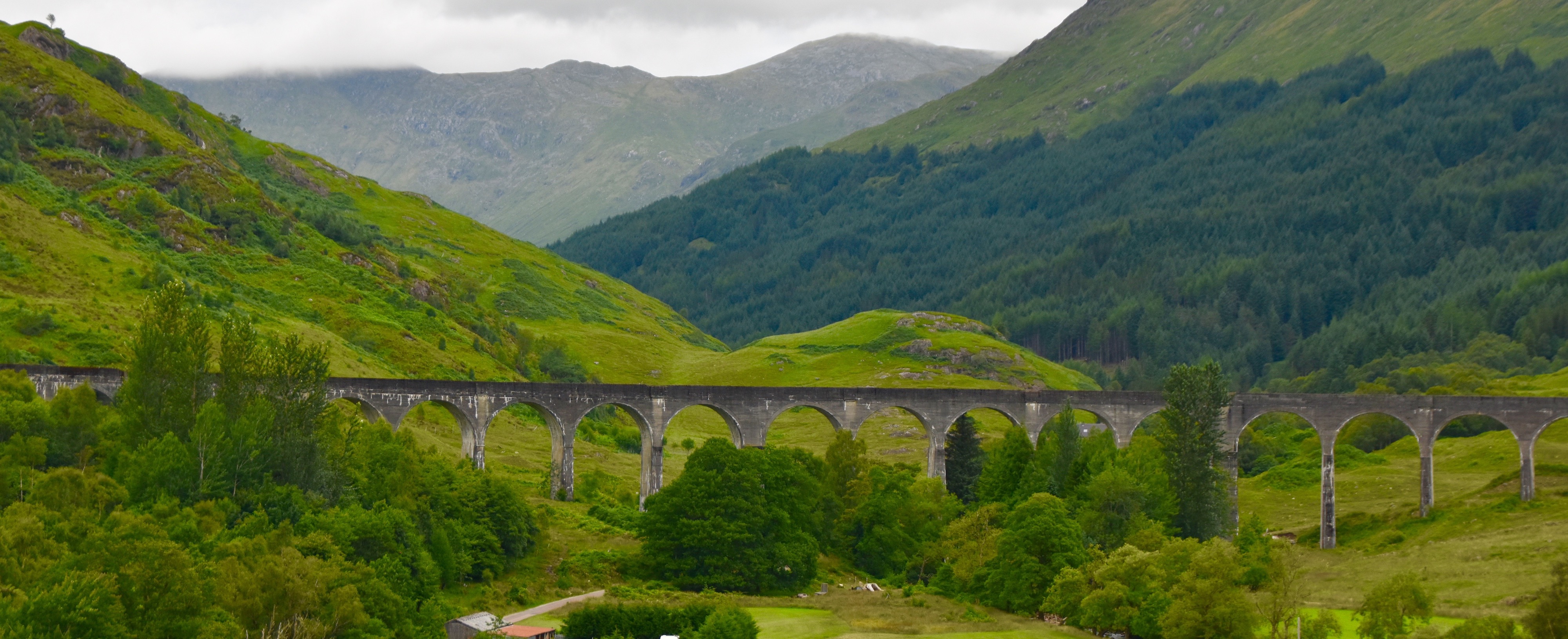
It’s impressive to be sure, but do people really come from all over the world just to see this bridge? Yes, and here’s why.
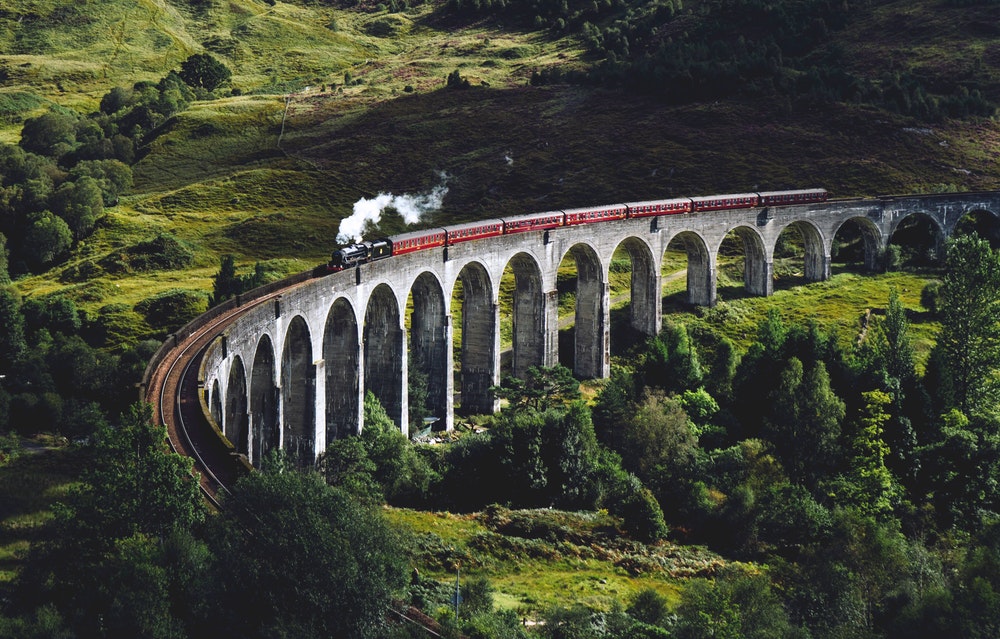
Recognize that train? It’s correct name is the Jacobite Steam Train and it’s a great summer tourist attraction that runs from Fort William to Mallaig, but it has another better known moniker. Yes, that’s the Hogwarts Express of Harry Potter fame and the shot of it crossing the Glenfinnan Viaduct is a staple of several Harry Potter films. I must say I did not expect to run into Harry Potter on a Liberation Tours trip, but you never know what they’ll come up with.
Glencoe
If there’s one name that is synonymous with treachery and breach of hospitality it is Glencoe, where on February 13, 1692 somewhere between twenty and forty members of the Glencoe MacDonald clan were massacred by forces allegedly under control of the Campbell clan. As massacres go number wise, it was not remotely in the big leagues with Nanking, Izmir, St. Bartholomew’s Day or even Wounded Knee. It was not even the worst massacre involving the MacDonalds who in 1578 were massacred by the MacLeod’s in revenge for the Macdonald’s burning down a church full of MacLeod’s seeking revenge for an earlier massacre by the MacLeod’s in the Cave of Francis. And you thought the Hatfield and McCoys knew how to feud. Glencoe was paltry in comparison to the 300 MacDougall clan members massacred in 1647 by Covenanters, after they surrendered Dunaverty Castle in exchange for a promise of clemency. So why do we remember Glencoe and not these other, arguably worse Scottish massacres?
That’s not an easy question to answer, because the actual facts behind what happened at Glencoe are not universally agreed upon. For a comprehensive review of what happened at Glencoe and more importantly why, read this excellent article from Highland Titles. A couple of things Glencoe was not. It was not a massacre of Catholics by Protestants. In fact, the MacDonald’s were, in name if perhaps not actual belief, Episcopalians. It was also not a massacre of MacDonald’s by the Campbell’s. Yes, the commander was a Campbell, but most of the actual soldiers were Lowlanders and the plan and orders to kill the MacDonald’s came from John Dallrymple, Secretary of State for Scotland, who later scapegoated the Campbell’s to deflect attention from himself. Thomas Macaulay perpetuated the MacDonald/Campbell feud theme in his influential historical essays.
What it comes down to it seems is that Glencoe became a symbol. Subsequent Jacobite leaders used it in the same manner that Americans used “Remember the Alamo” and “Remember the Maine” to stir up antipathy and get people to join their cause. Pro-British supporters used it as an example of the savagery and backwardness of the Highland Scots who needed to be brought under the civilizing yoke a united England and Scotland would bring.
Today Glencoe is a small village just inland from Loch Leven where the River Coe flows down from the surrounding hillsides with Ben Nevis visible in the distance. As we alight from the bus we are greeted by Rosalin MacDonald of the Glencoe Heritage Trust who leads us on a walk through Glencoe towards the Glencoe Monument where she not only answers questions about the massacre, but also on the efforts to preserve Glencoe from overdevelopment. This is Rosalin at the Glencoe Monument.
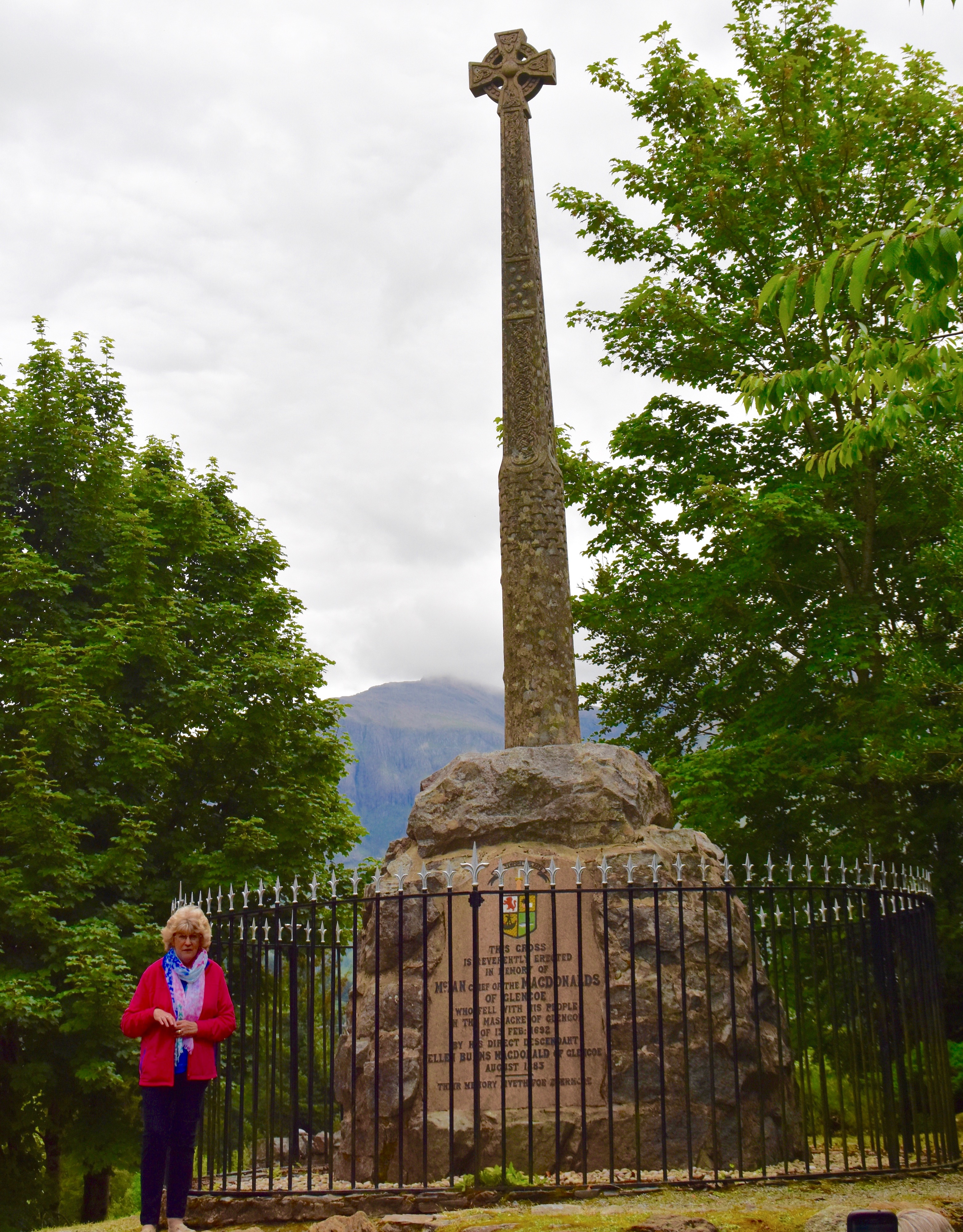
Afterwards we gather around the monument for a group photo.
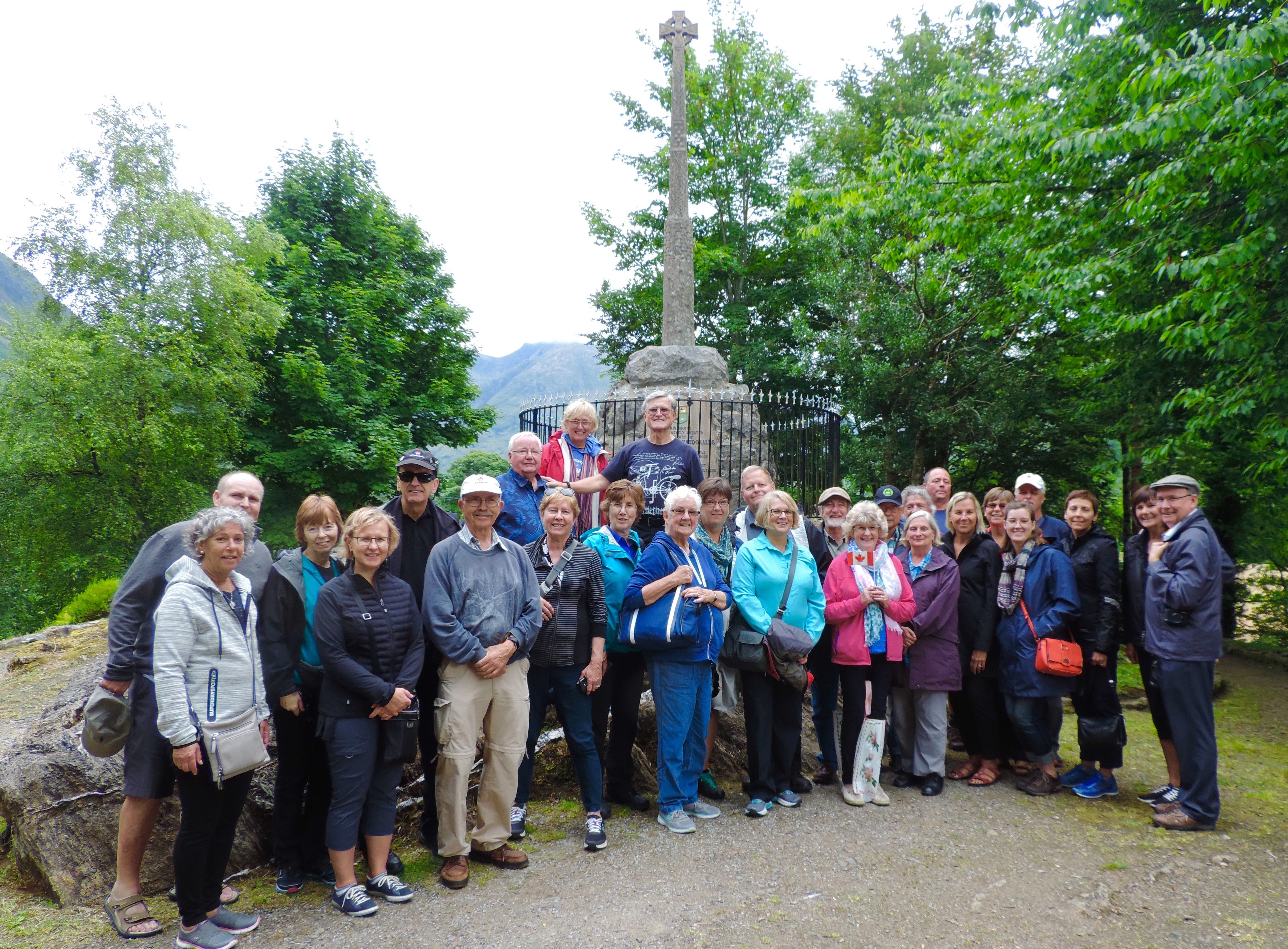
Sadly, the Liberation Tour is nearing its end with only a few days left, but those days were among the best on the tour. Stay with us as we head for Stirling Castle and learn about the feats of the great Robert the Bruce.

